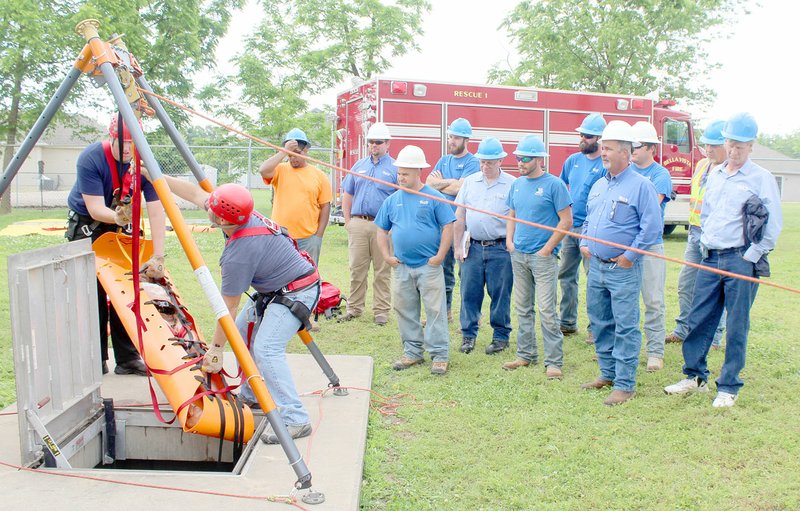The fire and water departments got together to practice getting in and of tight spaces and discuss working together in an emergency.
Bella Vista Fire Department Capt. Brandon Earley said it was helpful not only to practice with some lesser-used equipment, but also to discuss what sort of tools the two departments have and how they can better work together.
"They've got equipment that can complement us, we've got equipment that can complement them," he said.
For the May 23 exercise, firefighters set up a massive tripod, complete with stabilizing ropes, and used the wheel of a truck to change the ropes' direction so they could safely lower a firefighter through a maintenance hatch near the water tower off Boreland Place. They also lowered a mannequin to practice rescuing an incapacitated individual in a tight space.
Earley said these are skills that the department rarely uses, but it's important to get practice for scenarios like this, which can be very hazardous.
Firefighter-paramedic Josh Whitaker helped guide firefighters through the process of preparing this tripod. It's an excellent and versatile piece of equipment, he said, but the trade-off there is that it takes a lot of time to set up.
"We've got to build our mechanical advantage," he said. "There's nothing really too fast and easy about it."
Once the legs are in place and everything is stable, he said, it's important to tether the legs for stability. Moreover, he said, having safety lines on emergency workers operating next to the tripod is essential.
Once it's time to put someone's weight on it, he said, rope can be manipulated by pulleys to increase leverage and, as a result, decrease the effort required to safely support the rescue worker's weight.
"I want to be able to make some coffee when I get home," he said as the first worker descended into the maintenance hatch. "So don't screw the water up."
Once two rescue workers were in place, they got to work securing the mannequin to a specially designed immobilizer so their associates on the surface could heft it up to safety.
Whitaker said it was important to note that, while it did look easy, the mannequin weighs just under 100 pounds -- a weight range few, if any Water Department workers occupy.
Water Department superintendent Charlie Holt said it was helpful for his workers to see this process.
"It's great training," he said.
General News on 05/31/2017
